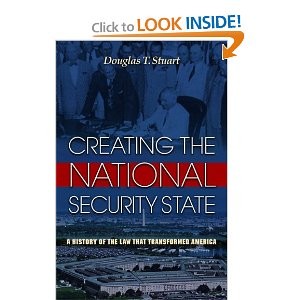
Douglas Stuart
5.0 out of 5 stars From National Interests to National Security April 24, 2011
Many observers recognize that the U.S. Government has for decades placed too much emphasis on military might to the detriment of other interests. This book provides a sobering explanation of how such a skewed approach emerged. Stuart is an historian at Dickinson College and also adjunct professor at the U.S. Army War College. He shows how the 150-year tradition of peacetime pursuit of national interests headed by the State Department gave way to the “Pearl Harbor System” of viewing the world through the perspective of potential threats to national security.
Paying special attention to the arguments of Professor Pendleton Herring for a more militarized and unified system to combat the threat of foreign dictatorships in the 1930s, Stuart carefully traces both the debate and the political maneuvering during and after World War II that led to the National Security Act of 1947. The birth of the NSC and CIA, the spinoff of the Air Force from the Army, the rearguard action of the Navy to thwart unification of the services, the decline of State–Stuart skilfully analyzes how these shaped the national security state. He also takes the story into the Fifties to show how the various roles in the new system–most notably, the covert operations of CIA that replaced its original mission of intelligence coordination–fell into place in practice.
As a retired FSO, I found this account thorough, objective, and ultimately chilling. One sees that, once the militarized national security system took shape, it crunched forward inexorably despite occasional setbacks and scandals. Still, Stuart finds some hope in the thought that the U.S. has become “a chastened Colossus that is increasingly aware of the limits of its capabilities and the complexity of its challenges. This is why,” he continues, “a policymaking system that asks, ‘Where is the threat?' and ‘Who is the enemy?' is not as useful as a system that asks, ‘What are the issues?' and ‘What are our interests?'” I recommend this book to anyone concerned with the reform of the U.S. Government and the redirection of its policies to deal with the real challenges of the future.



